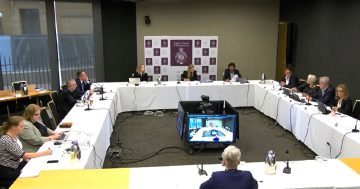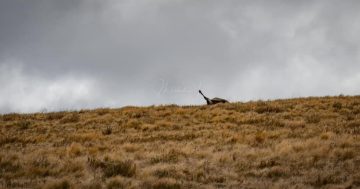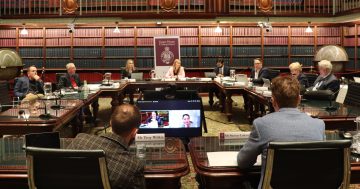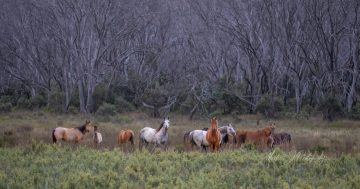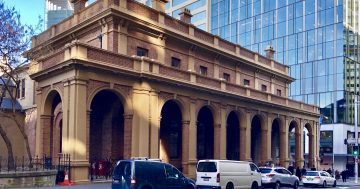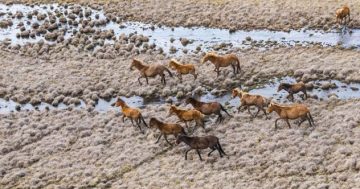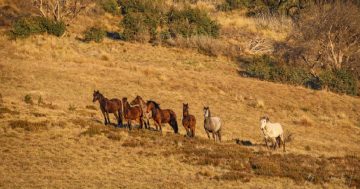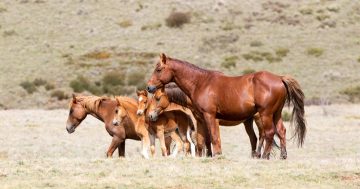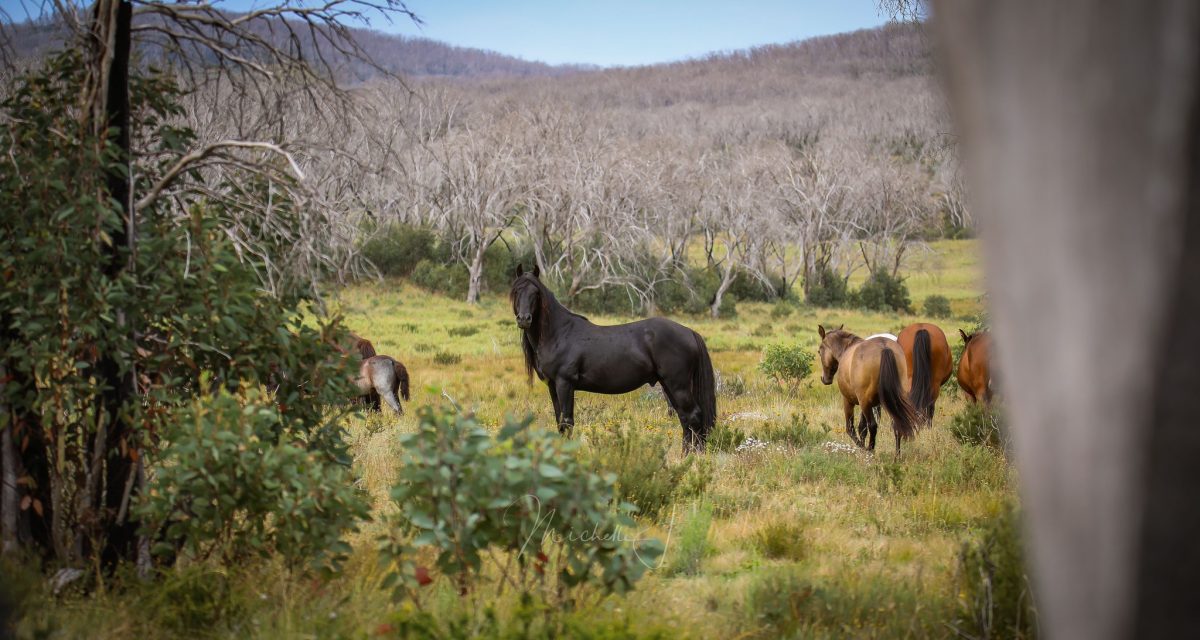
Senate inquiry members will visit Kosciuszko National Park to observe the wild horses, or brumbies, being targeted for removal by the NSW Government. Photo: Snowy Brumby Photography Adventures with Michelle and Ian.
A NSW Senate inquiry into the proposed aerial shooting of wild horses in Kosciuszko National Park (KNP) is heading to the mountains, the day after a third and final hearing in Sydney on Wednesday (27 March).
Inquiry chair, Animal Justice Party MLC Emma Hurst, whose motion to stop the killing of the wild horses failed in Parliament last week, has confirmed inquiry members will visit the park to observe the wild horses, or brumbies, currently being targeted for removal by the NSW Government.
The visit falls just two days short of a staged Easter weekend rally of brumby supporters who will gather in KNP on 31 March to protest against a seven-month lockout in the northern section of the national park to allow for aerial shooting operations targeting horses, deer, pigs and other feral species.
The government closed the southern portion of the park south of the Alpine Way on 4 March ahead of a month-long aerial culling operation before the attention moves to the northern section for a six-month period from 4 April.
NSW Environment Minister Penny Sharpe received the go-ahead to deploy aerial shooters under an amendment to the KNP Wild Horse Heritage Management plan last October after concerns were expressed by the National Parks and Wildlife Service (NPWS) that efforts to reduce the estimated 17,432 horses to a legislated 3000 by 2027 were failing.
Ms Sharpe told Parliament last week the culling operations were necessary to protect Australia’s only alpine environment.
“It is fragile. Around 32 species of both plants and animals are found there that are not found anywhere else on Earth,” she said.
”Twelve of them in particular are threatened native species that are under severe pressure from the impact of the horses in the park. As a result of that, we had to make some hard choices.”
Ms Sharpe said 4152 horses had been removed from the park since November 2021 – 1336 from aerial shooting, 129 from ground shooting, 916 for rehoming, 640 for transport to knackeries, 109 from shooting in yards, 70 from tranquillisation in yards, 37 from euthanasia and 15 from dying indirectly for different reasons.
Ms Sharpe confirmed 534 horses had been shot in the 15 days since aerial shooting started in southern KNP, with four additional horses shot from the ground.
The following day in the Senate, Ms Hurst’s motion for the aerial shooting to cease was defeated, resulting in a Coalition split.
Afterwards she said she was disgusted the Shooters, Farmers and Fishers Party, which sided with the Labor and Greens majority, and had feigned support for the brumbies, only to suddenly flip its position, “and support an aerial shooting bloodbath on brumbies”.
Her comments follow the news two Snowy Mountains residents had last weekend lodged a cruelty complaint with the NSW RSPCA following the recent discovery of three fresh horse carcasses in the Pilot Wilderness Region with multiple gunshot wounds to the torso, which marked a departure from the RSPCA’s aerial shooting standard operating practices (SOPs) which dictate only head (brain) or chest (heart/lung) shots.
Shooting to other parts of the body, the RSPCA SOPs state, is unacceptable.
The report further alleged the aerial shooting operations took place in weather characterised by heavy fog and light rain, in contravention of the SOPs, which stipulate, for safety reasons, that shooting from a helicopter cannot be done in adverse weather conditions.
It is understood the shooting took place on 14 March.
RSPCA NSW said in this matter, the informant implicated RSPCA NSW as the person of interest and due to this, RSPCA NSW referred the matter to NSW Police immediately.
The police said there was no police investigation of the complaint.
Nationals MLC Wes Fang said the RSPCA was deficient in its oversight over the NPWS’s aerial shooting operations by not insisting cameras be used to monitor all activity and it should pull its support for the SOPs.
A crowdfunded high-tech independent survey in northern KNP will also come under the spotlight at next week’s Senate inquiry, with initial results indicating horse numbers are vastly lower than State Government estimates.
The public portal went live last week with only 236 horses, or 1.113 horses per square kilometre, manually counted in the 212 sq km Northern Kosciuszko survey area.
The organiser of the private count, Rocky Harvey, said the official NPWS 2023 Wild Horse Population Survey stated that between 3315 and 5121 horses should be present in the area.
“But we can see quite clearly on this imagery it’s impossible to hide the additional, say, 3000 to 5000 horses, and we’re very likely looking at a population overestimate of more than 90 per cent,” he said.
“If this overestimation is applied to the total NPWS population estimate of 17,432, it is likely there are already less than 1200 horses remaining in the entire park, which is far below the legislated 3000 horses.”
People are invited to view the images captured by fixed-wing aircraft on 25 February in this initial survey, with another survey area proposed.
Original Article published by Edwina Mason on About Regional.







